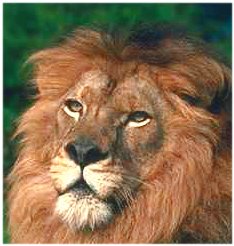
If one pendulum is connected to another with a spring, in time, the motions of the two pendulums will become coordinated. Such systems, known as coupled oscillators, could soon help biologists to understand critical questions in biology, such as why some locations overflow with plants and animals while others are bereft.
The idea of oscillating populations is not new to ecology, says University of Michigan theoretical ecologist John Vandermeer, who has just penned an article on the subject for the journal BioScience. “We know that any predator-prey system, say lions and zebras for example, shows oscillations,” explains Vandermeer. “If there are lots of lions preying on zebras, numbers of zebras decline; then because zebras are scarce, lions starve and their numbers dwindle, allowing the zebra population to build up again. The pattern is like waves or pulsations.”
In the case above, bringing leopards into the system causes lion and cheetah populations to oscillate in phase with each other – peaking and declining at the same time. That works to the leopard’s advantage – when both lion and cheetah populations are low, leopards can pounce on the plentiful prey. But then lions and cheetahs increase again, eventually building up their numbers and combined competitive strength enough to drive out the leopards, at least until the next low point in the lions’ and cheetahs’ population cycles.
Ecological systems can also become coupled when a new prey species invades and competes for resources with prey species in two previously unconnected predator-prey systems. For example, an extremely fast antelope might begin competing with zebras and impalas for food. Even though neither lion nor cheetah is fast enough to prey on the new antelope, the antelope’s activity links the previously unconnected lion-zebra and cheetah-impala pairs. In such a case, the ups and downs of the two original prey species are thrown into chaotic but coordinated patterns. “That’s what’s known as coordinated chaos – a phenomenon that occurs in some physical systems, such as lasers, but hadn’t been pointed out in ecology before. By oscillating out of phase with the other two grazers – zebras and impalas – the antelope can coexist with them, prospering when their numbers are low,” explained Vandermeer.
Vandermeer contends that the study of oscillations in biological populations will lead to insights into complex systems, such as those that include animals that eat other predators as well as omnivores that eat both predators and those predators’ prey. “In the past, ecologists have taken a traditional Newtonian view of the world, where everything comes into a nice equilibrium,” Vandermeer said. “But oscillations sometimes destroy that equilibrium. What I’m suggesting is that we ecologists need to acknowledge the inherent oscillation in consumer-resource systems, such as predator-prey, herbivore-plant and parasite-host systems, and start approaching these old ecological issues in terms of coupled oscillators.”








Comments are closed.